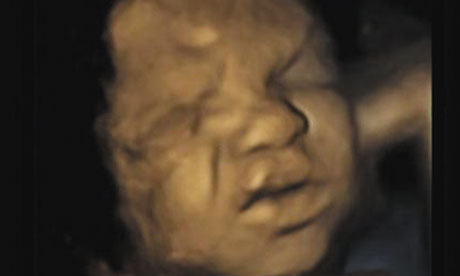
Their faces scrunch up in frowns, fold into bizarre grimaces. All children love to pull faces, but 4D ultrasound scans of life in the womb by researchers from Durham University show that we apparently start doing it before we are born.
These gurning pre-borns resemble studies of facial expression cast in metal by the 18th-century sculptor Franz Xaver Messerschmidt. Messerschmidt was morbidly obsessed with extreme facial contortions, which he rendered in a lead-tin alloy that adds to their melancholy weirdness. Yet he was working in a long tradition of art that investigates the expressive potential of the human face.
The 17th
-century French artist Charles Le Brun, who worked for Louis XIV as a history painter, made a systematic study of what he thought was the entire range of facial expressions. In his drawings, angry, out-of-control faces resemble wild animals. In fact, his leonine face of anger derives from drawings by Leonardo da Vinci in which furious human faces are compared with those of lions and horses.
The new amazing pictures of behaviour before birth show how essential expression is to being human. Just as artists have long recognised, the face is a primal means of communication. This wasn't always recognised, however – it had to be discovered. Early Greek art portrays noble faces fixed in calm hauteur. It was only in the Hellenistic age that Greek artists became fascinated by expression in works like the Laocoon, in which a man contorts his face in agony.
Is the a
bility to express emotion in our faces a defining difference between human beings and other animals? No, because expression exists in animals. Charles Darwin brought together artistic portrayals of the human face with his own observations of the natural world to demonstrate this in his 1872 book The Expression of the Emotions in Man and Animals. Darwin gave a scientific basis to similar observations by artists such as Le Brun and Leonardo.
So maybe the fact that we pull faces in the womb is an expression of something more basic than "human nature". It's sheer vitality. To be alive is to grimace and grin. That's why children's faces are never the same from one moment to the next. It's all that life bursting through.

